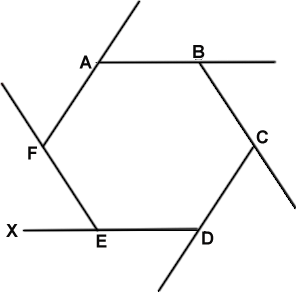Angles of a hexagon
This task is about interior and exterior angles.
 |
|
Use the diagram of the regular hexagon above to answer the questions below.
|
|
| a) |
Calculate the exterior angle∠FEX. Use the space provided to show your working.
∠FEX = __________° |
| b) |
Calculate the interior angle ∠ABC. Use the space provided to show your working.
∠ABC = __________°
|
| c) |
Through what angle would the hexagon have to turn clockwise for point A to get to point E?
__________°
|

